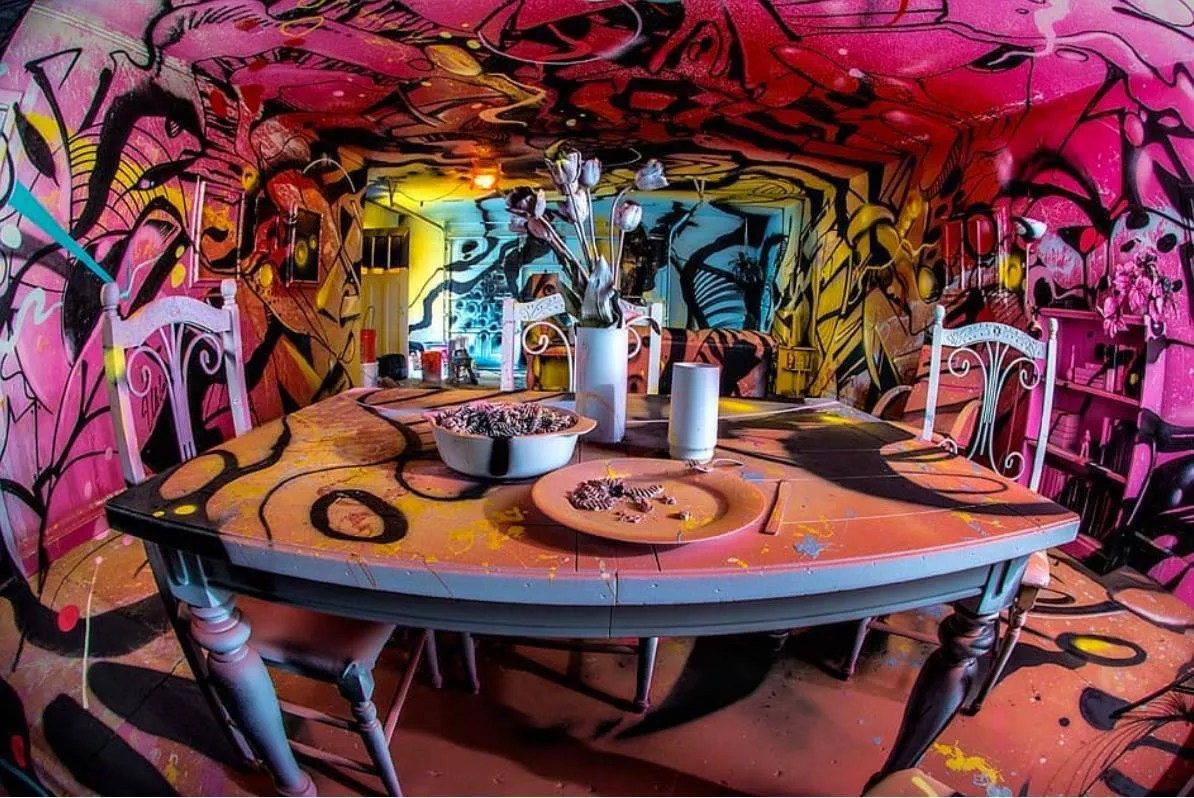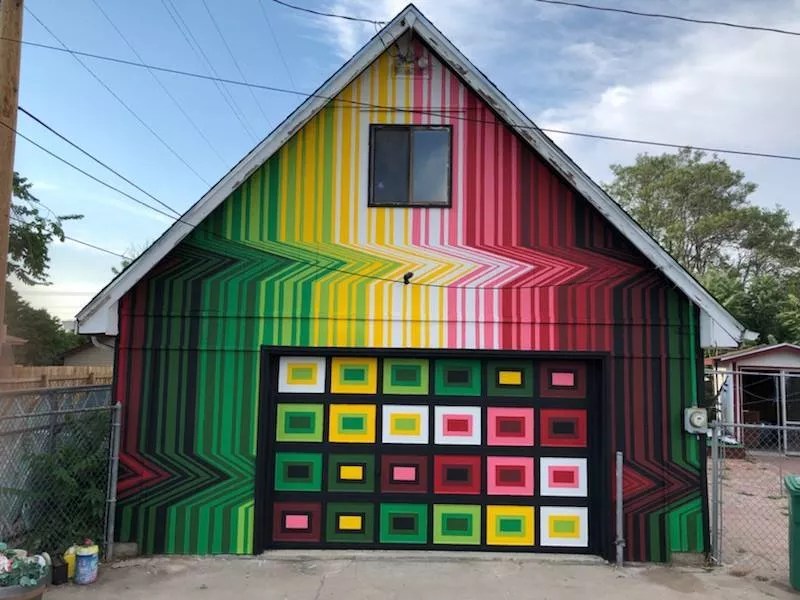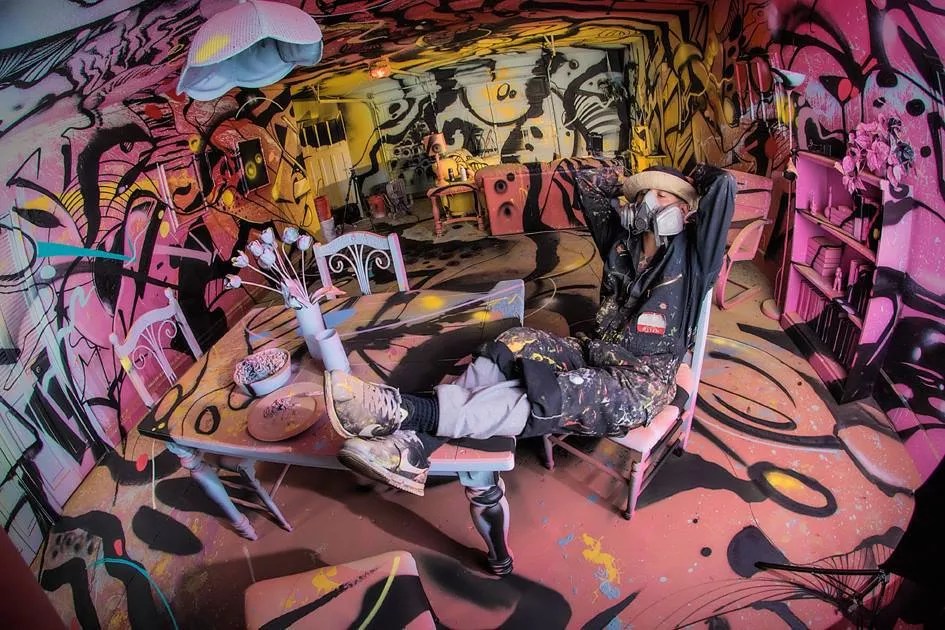
Rich Aguilar

Audio By Carbonatix
What started as a dream of the Buntport Theater crew is now a reality with the debut of This Machine Has a Soul, a community project kick-started by Warm Cookies of the Revolution founder Evan Weissman and an army of creatives, as well as Denver City Council District 9 movers and shakers. Their goal? To explain how neighborhood-generated budgeting works and why communities should decide how their tax money is used. And to do it in an entertaining, involving way, with a Rube Goldberg-like machine based in a garage in Swansea.
Though the installation will only be up for five days, beginning Thursday, August 16, Weissman says the months-long process that produced it has been just as important as the final product that the public will see.
“This project has been going on for two years, but the only part anyone knew about in the beginning is this part,” Weissman explains. “It feels like this [installation] is the sexy part, but there were all these residents and kids who for the better part of two years spent time researching it and doing all the dirty work to make it happen. The installation is inspired by that process.”

Artist Anthony Garcia Sr. decorated a Swansea garage in his signature serape-stripe style for This Machine Has a Soul.
Courtesy of This Machine Has a Soul
With guidance from community leaders in north Denver, including Swansea native and Denver City Council candidate Candi CdeBaca, who’s led the district’s I-70 redevelopment fight, and Five Points organizer Candace Johnson, This Machine Has a Soul developed over months of neighborhood coordination pairing residents – “people who live, work, eat, drink and pray here,” notes Weissman – with artists and activists to hash out the developing details, including the creation of a real Rube Goldberg machine designed to lead people through the revolutionary ropes of a neighborhood-generated budgeting process.
“We built the machine to explain participatory budgeting, which is much more exciting than someone just talking about it,” Weissman says. “This is the type of thing – without being too cheesy about it – that is the coolest part of the art to me, because if I were to just tell people about the project and participatory budgeting, I’d get nothing. But when you get badass artists together to work on it, you suddenly get a lot of eyeballs to check it out.”
The creative crew behind This Machine Has a Soul includes muralists (Jolt, Birdseed Collective leader Anthony Garcia Sr., Elvis Nunez and others), the theatrical gang from Buntport Theater, poet Kerrie Joy, tech wizards at Locker Partners and Mmmanyfold, and a multitude of volunteers. “It’s a real mix, and it’s really weird, but fun weird – it’s a strange old space we’ve got there,” Weissman says, without irony.

Jolt’s refurbished ’53 Chevy Bel Air.
Courtesy of This Machine Has a Soul
And that strange space will be bursting with performer guides including magician Professor Phelyx, murals by local artists, a classic 1953 Chevy Bel Air rejuvenated by Guerilla Garden wall-writer Jolt, a tree giveaway, a “closet of souls on video” shed filled with TV screens streaming video stories and performances from the mouths of neighborhood people and representatives, and a central art installation in the garage, designed by Jolt and the crew from Buntport Theater.
All of it is essential to the experience, says Weissman: “If people spend a bit of time in the closet watching the videos, they’ll begin to understand the complexity and non-complexity that comes from people feeling like they either have a choice or don’t.” And it will get to the nitty-gritty of current events in Swansea and the other neighborhoods in the shadow of the interstate.
“It’s about what culture means to people, and how decision-making, money and art all have the potential to be weaponized,” Weissman continues. “But it’s also the most liberating thing. As a quick example, folks in the neighborhood have differing opinions about the murals under I-70. When we used to do that, we were arrested. Why are they only letting artists do that now, when they’re going to knock it down? Those questions muddy the waters.

Jolt takes a break from painting installation walls for This Machine Has a Soul.
Rich Aguilar
“Jolt has the best line,” adds Weissman. “He says, ‘Street art has become the wallpaper for gentrification.’ I think he is right. They’re incredible, so why shouldn’t talent use that as a canvas? But then there are questions about who was there first, and are you from the neighborhood to begin with? All of that is a complicated issue.”
It all boils down to this: See This Machine Has a Soul if you’re ready for community-based change. And who isn’t?
Concludes Weissman, “I hope this will stay in people’s minds as the coolest art installation they’ve ever seen. If they learn stories from residents and what participatory budgeting is about, that would be rad. Instead of holding a neighborhood meeting, we want to affect people in a different way.”
The installation/performance/spectacle This Machine Has a Soul will be open to the public for five days only at 4335 Thompson Court in the Swansea neighborhood. Visit from 4:30 to 8:30 p.m. on August 16, 17 or 20, and from 2 to 7 p.m. on August 18 and 19. Admission is free; find more info at the website.